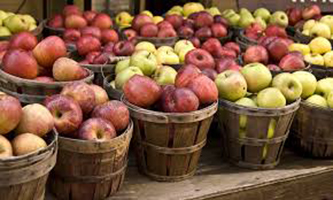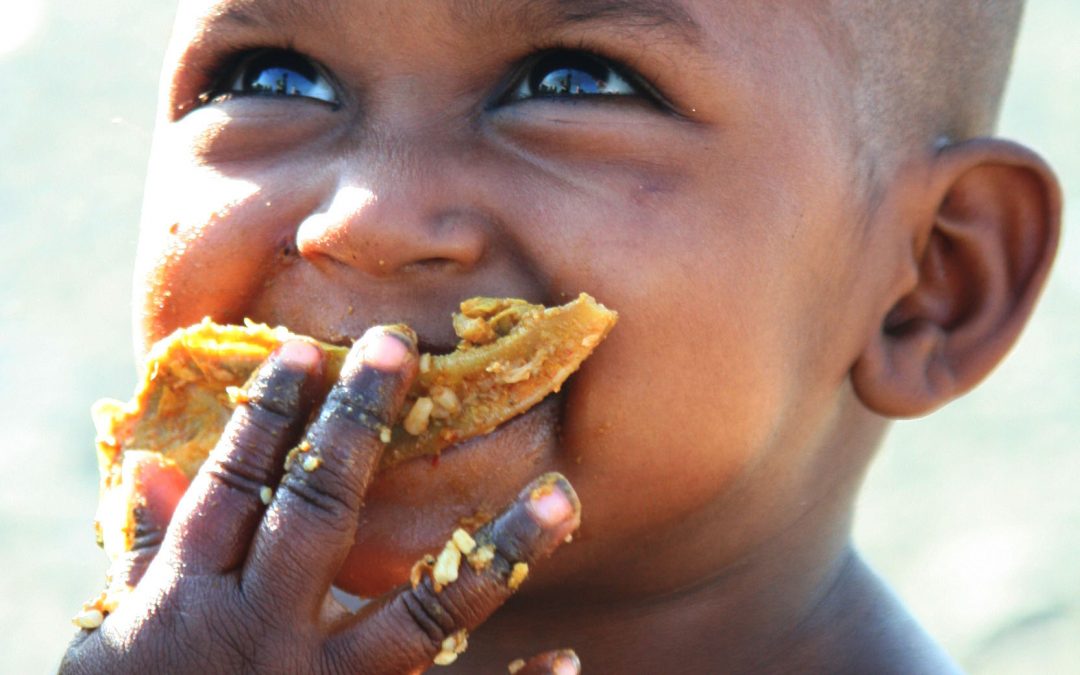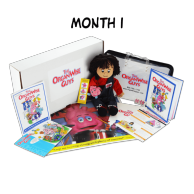
by admin | Oct 30, 2017 | Healthy Food, Kids, Uncategorized
Halloween is fast approaching and let’s face it … this day can be a nightmare for any family trying to make healthy choices! The good news is, a little planning and foresight can take the fright out of the night. So try on these Halloween hints for size!
Here are a few Halloween hints to make your day safe and healthy!
- Decide in advance what to do with the loot! A piece of candy isn’t a bad thing but a sugar coma from eating half a bag of candy is! How will you divvy up the goods? The danger isn’t just for the kids; it’s really easy for us adults to help ourselves to those treats as well.
- Go Trick or Treating. Sure, you’re filling your bag with candy but you’re also out walking the neighborhood. Map out your streets and take the whole family out for an hour or so. Challenge yourselves to walk a certain number of miles while you’re out!
- Make sure you wear reflective clothing or have flashlights on your family. Kids are excited and drivers are distracted, so do you best to make yourself visible.
- Remember it’s a school night! Start early enough that your kids still get a good night’s sleep and limit their sugar intake. Your child’s teacher will thank you!
- Lead by example. Find fun and healthy treats to give away at your house. We got some great ideas via facebook; from small bags of microwave popcorn, small boxes of whole grain cereal, fruit snacks, stickers and more! You’ll be glad when you don’t have left over candy lying around to tempt you too!
If you have any other Halloween hints, we’d love to hear them! Feel free to share on our facebook page!

by admin | Oct 26, 2017 | Educator, Healthy Food, Kids, Nutrition
Let’s do an Apple Taste Test for National Apple Month! Apples are also an OrganWise Guys Foods of the Month for October, and the perfect food for the fall season. Apples are such a versatile food that can be used in anything from salads to desserts and they come in so many delicious varieties!
Chew on this interesting apple trivia:
- Americans eat approximately 120 apples apiece each year!
- Apples are nutritious because they contain lots of fiber, vitamins C, B6, and A, and potassium, as well as antioxidants.
- 2500 known varieties are grown in the United States.
- 36 states grow them with Washington, New York, Michigan, California, Pennsylvania, and Virginia being the top production states.
- Apples are available all year round and are a perfect take-along snack anytime!
- Apples don’t require peeling so eat the skin because it contains healthy nutrients.
A taste test is a really fun way to encourage kids to try a small sample of a new food where they may typically be more close-minded about trying new things. This interactive apple taste testing worksheet will help you introduce several different apple varieties and let’s them provide feedback.
We would love to hear about your at-home taste tests! Share with us how it went and include any pictures of the finished worksheets on our Facebook page!

by admin | Mar 7, 2017 | Kids, Nutrition, Uncategorized
We all know the importance of protein to maintain and repair the body, but many new parents worry that their baby or toddler may not be getting enough protein in their early, formative years. Because protein is essential to growth and development, it is critical that little ones get enough of this vital nutrient because they are growing so rapidly. In fact, babies and toddlers need more protein per pound of body weight than older children or even adults.
What exactly is protein and why is it so important? Protein, along with carbohydrates and fats, are three essential nutrients found in food that all of us need. We get protein from certain foods that our bodies then digest into small compounds called amino acids. There are many amino acids but humans use only 22 of them to grow and maintain our bones, muscles, blood, skin, hair and organs. Of the 22 amino acids we humans must have, our bodies can make 13 of them. We have to get the other 9 – called essential amino acids – from protein-rich foods, such as meat, eggs, dairy products and beans.
So what do babies do to get their protein? The good news is that breast milk or formula supplies all the calories and protein a baby needs until they are 4 to 6 months old. Before that time, a baby’s digestive system simply isn’t ready for more than a liquid diet. After 6 months, however, protein-rich solid foods should gradually be introduced to supplement the mother’s breast milk or formula. It is important that babies get protein every day because the body doesn’t store protein the way it stores fat and carbohydrates.
Protein is important for infants because the body weight of a baby doubles by age 6 months – and scientists estimate that about 10 percent of a young child’s energy comes from protein. Skimping on protein can slow down a baby’s growth and development, make them susceptible to illness, retard the development of the heart and lungs and gradually sap the energy that they need to grow into healthy children and adults.
The Ohio State University Extension Service recommends feeding infants strained or chopped meats and mashed beans at 6 to 8 months and mashed egg yolks, cottage cheese and yogurt at 8 to 10 months. At 10 to 12 months, babies can eat the same protein-rich foods the rest of the family eats, though the foods should be soft and cut into small pieces. The American Academy of Pediatrics also recommends starting your child on solids between 4 and 6 months and to look for some of these developments as signs of “readiness”:
- Can sit upright and hold up his head
- Is curious, looking at everything around him
- Has mastered tongue movement
- Seems hungry after getting a full day’s portion of milk (eight to 10 breast feedings or about 32 ounces of formula)
As your child grows, it is also important that your toddler gets plenty of protein. Once your child is up and walking, protein is needed to power muscles, and brain cells require sufficient protein to learn speech and language skills. Healthy 1- to 3-year-olds need 0.55 grams of protein per pound daily, which means the average 29-pound toddler should get 16 grams of protein each day, according to the Children’s Nutrition Research Center at Baylor University.
Here are some good sources of protein for your child:
Eggs
Egg yolks can be mashed and given to a baby as part of a healthy diet. Egg yolks mixed into rice or pasta or served with toast can provide an easy snack or main course. Avoid egg whites until after the first birthday, says Children’s Healthcare of Atlanta, and consult your pediatrician if members of your family have egg allergies before introducing eggs into your child’s diet.
Chicken
Broiled, baked or grilled chicken that is diced very small is a good source of protein for babies.
Chicken can be tossed with chopped pasta or served plain alongside some steamed vegetables. Children’s Healthcare of Atlanta recommends chicken cooked at home over the jarred variety because it does not contain any fillers.
Dairy Foods
Protein is abundant in dairy foods, such as cow’s milk, yogurt and cheese. A baby should be 8 months old before cheese is introduced and dairy should be avoided altogether if an allergy is suspected.
Infant Cereal
High protein infant cereal helps meet protein needs for babies too young for chunky solid foods.
The cereal should be mixed with breastmilk or formula. Pureed baby fruits or vegetables can also be stirred into the cereal to improve the taste and boost its nutritional value.

by admin | Feb 22, 2017 | Health Exercise, Kids, Obesity Prevention Tips
Parents feel responsible for the future well-being of their children. Whether that well-being is defined as physical, emotional, or psychological, we know that healthy children – who learn good habits at a young age – are more likely than not to develop into healthy adults. Interestingly enough, a focus on physical well-being can lead to beneficial patterns of behavior in both the emotional and psychological realms. Feeling good physically makes anyone feel better about themselves in general, and as a parent, helping your child stay active and engaged in activities other than watching television or playing video games is an important goal to try to achieve.
Recommendations Regarding Physical Activity for Children
The American Heart Association recommends that children over the age of 2 participate in at least 60 minutes of enjoyable, moderate-intensity physical activities every day. Those physical activities should be developmentally appropriate and varied so that your child enjoys the experience and feels successful.
If 60 minutes per day seem too difficult because of your work schedule or your childcare logistics (and there seems to be barely enough time for your child to even do his or her homework), try to provide at least two 30-minute periods or four 15-minute periods in which they can engage in vigorous activities appropriate to their age and stage of physical and emotional development.
Strategies to Increase Physical Activity in Children
A related strategy is to work on reducing sedentary time (e.g., watching television, playing computer video games or talking on the phone). First of all, try to actually track how much time your child spends now on the phone or siting in front of an electronic device. Then, set limits and begin to reduce the allotted time for these activities to create time in the day for being physically active.
Don’t forget to ask your child what kind of physical activity they enjoy. Remember, being active is supposed to be FUN! Being physically active doesn’t have to be hard. Riding bikes with friends, jumping rope, playing hopscotch, and running a relay around the park all qualify as meaningful physical activity. Any game that gets your child up and moving is a great way to stay physically active and make their heart, bones, and muscles strong.
Also, remember that parents should try to be role models for an active lifestyle and teach your children through example that you, too, value increased physical activity. Show them that you value the importance of daily exercise. Take the stairs or park the furthest distance from the entrance to the store so that you can more steps in your day. Take the family for a weekend hike, ride your bicycles together, walk to the store after school, sign up for a parent/child yoga class or just shoot hoops in the park. Any of these options will provide you both not only with exercise but also valuable time together. You will both benefit!
The results should be almost immediate. You will begin to notice that your child demonstrates improved psychological well-being, more self-confidence and higher self-esteem. Feeling good physically benefits your child’s overall health – a worthy goal for any parent and one that you can readily achieve.

by admin | Aug 5, 2016 | Child Obesity, Kids
With the rate of child obesity having almost tripled since 1980, America has more than earned yet another title: “The Fatter Nation.” Surprisingly enough, many health surveys consider obesity a bigger health crisis than smoking and drug abuse. Childhood obesity has become one of the top concerns among American parents today. Their concern is justified since obesity is the root of numerous health risks, like asthma, diabetes, high blood pressure, spikes in cholesterol levels, and even cancer. Overweight children are often bullied and are not fit to take part in any physical activity, thereby developing inferiority complexes, depression, and a sense of loneliness.
A dire consequence of child obesity was articulated by the former U.S Surgeon General, Richard Carmona. He said, “Because of the increasing rates of obesity, unhealthy eating habits, and physical inactivity, we may see the first generation that will be less healthy and have a shorter life expectancy than their parents.”
(more…)

by admin | Aug 4, 2016 | Child Obesity, Kids
According to the American Heart Association, one in three American kids is overweight. Moreover, the Centers for Disease Control and Prevention has declared childhood obesity among the top health crises in the USA after drugs and smoking. Still other sources claim that our obesity rate has risen dramatically over the past decade. Save the Children found that the USA has failed to create a safe and healthy environment for kids, given the alarming obesity rate in the nation.
Just by looking around, you can easily spot obese children—maybe your child is one of them. Obese children are prone to major health risks, including cardiovascular diseases, diabetes, bone and joint problems, and even several types of cancer. In addition to risking health problems, overweight children are teased, bullied, and kept out of the team activities, leading to sadness, low self-esteem, inferiority complexes, and depression.
(more…)







